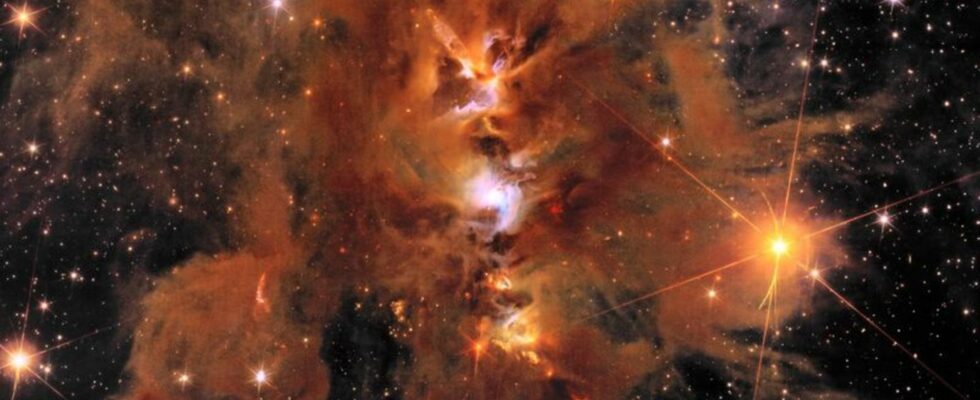astronomy
New “Euclid” images show distant galaxies
“Messier 78”: a bright star cluster surrounded by interstellar dust. Photo
© ESA/Euclid/Euclid Consortium/NASA/J.-C. Cuillandre (CEA Paris-Saclay), G. Anselmi/dpa
“Euclid” was launched last summer – now there are detailed images of the European probe to admire. Even things that have remained hidden until now can be seen.
Around six months after the first images, further images from the European probe “Euclid” have been presented. One shows the galaxy cluster “Abell 2390” with around 50,000 Galaxies: a “beautiful example” of a so-called gravitational lens that forms huge curved arches in the sky, according to a presentation by the European Space Agency (ESA) at the Space Council in Brussels.
The mass of the cluster causes the light from galaxies that lie behind “Abell 2390” as we see them to be distorted – the phenomenon is called gravitational lensing.
Another image shows “Messier 78”, a glowing star cluster surrounded by interstellar dust. “Euclid” used his infrared camera to make hidden regions of star formation visible and discovered newly formed stars and planets. Images of the galaxy “NGC 6744”, the galaxy cluster “Abell 2764” and the so-called Dorado group of galaxies were also presented.
Millions of objects captured
Within just 24 hours, a total of over eleven million objects were detected in visible light and another five million in infrared light, according to Esa. “This space telescope aims to answer the biggest open questions in cosmology,” said Valeria Pettorino, Esa’s Euclid project scientist. “And these initial observations clearly show that ‘Euclid’ is more than up to the task.”
The images obtained with “Euclid” are at least four times sharper than those taken by ground-based telescopes, according to ESA. They covered large areas of the sky at unrivaled depth and peered far into the distant universe with both visible and infrared light.
The probe was launched into space at the beginning of July 2023. The centerpiece is a high-resolution telescope equipped with two cameras – one for the visible wavelength range and one for the near-infrared range. They are intended to depict the movements and shapes of galaxies or help to determine the distance of galaxies.
ESA wants to take a look into the past of the universe and research its development over the past ten billion years. In total, data on billions of galaxies will be collected and a 3D map of the universe with time as a component will be created.

